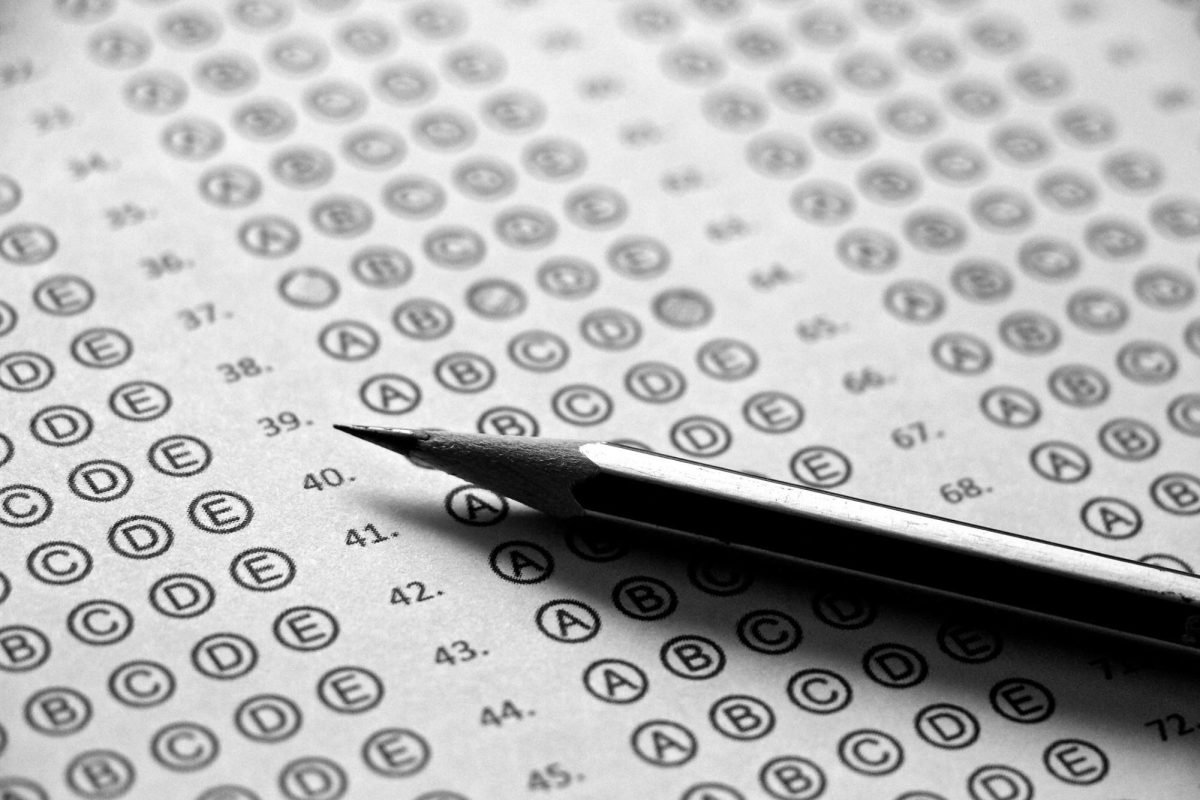The first wave of standardized online SAT tests was administered on March 9. Long gone are the days of bubbles marked by No. 2 pencils, as this recent testing cycle introduces the SAT’s new digital format after 98 years of having been on paper. With many colleges returning to requiring test scores, the online SAT offers a refreshed approach to testing; however, the test navigates the digital age without fully addressing its continued issues of accessibility.
While the ACT still offers a choice in paper or digital format, the SAT has officially moved to full digital format, with few exceptions for those with visual impairments or other documented learning-related issues. At the testing location, the proctored test is administered either on the student’s device or a College Board-supplied device. The exam is now around two hours — shorter than the original three hours. This revitalized SAT also has shorter reading passages with one question per passage and a built-in calculator and timer. Another change includes adaptive testing which gives questions based on the student performance, where after students finish the first half of the questions for the reading and writing section and math section, the second half of the questions for each subject will be easier or more difficult, evaluating the student’s ability more precisely. An additional bonus to this adapted format is that instead of the former six to eight weeks to receive results, students now only have to wait within two weeks of testing.
The shortened format was designed to cater to a generation that grew up with the internet and now has decreased attention spans, offering a revitalized and less stressful approach to the standardized test. Due to complications of the COVID-19 pandemic, many universities offered test-optional or test-blind policies. However, in recent months, some universities have decided to reverse their decisions from the COVID-19 era; Yale University cited that “tests can highlight an applicant’s areas of academic strength, reinforce high school grades, fill in gaps in a transcript stemming from extenuating circumstances, and — most importantly — identify students whose performance stands out in their high school context” and stated that they would accept Advanced Placement and International Baccalaureate tests under this reversal.
Critics of standardized tests believe they ignore the disadvantages of students from lower-income backgrounds, who may not have the same access to test preparation or school resources. While going test-optional or test-blind offered greater access to students who may have been discouraged from initially applying due to test scores, this notion does not seem to matter to many elite schools that have justified their decision in countering that standardized testing is one of the best indications of how a student may perform academically, regardless of background. Inequality on college campuses is tied to more than just standardized testing; however, this trend of reversing policy decisions does away with widened accessibility.
The new format is posited as part of a larger effort to make standardized testing more accessible. In the pilot run of the digital format, the College Board reported that students who had ADHD, dyslexia and those whose first language is not English were able to focus more on the new format with the shorter passages. Critics of the former SAT had stated that it showed inequities in the scores of girls, students of color and lower-income students, but it is too early to have the data collection on how this new digitized format affects these student groups with the alterations. Going digital, however, does not solve this problem.
Students and schools need access to technology to make this standardized testing possible. The exam requires students to have their own devices. For those students who do not have access to a device and request one less than 30 days before the exam from the College Board, submitting a request for one doesn’t mean the device is guaranteed on test day at your location, which could jeopardize one’s ability to take the exam. Navigating an unfamiliar device on loan from the College Board may also affect one’s scores. With the digital format, some students may also be unfamiliar with how the built-in calculator functions. At school, among other testing locations, where two-thirds of students take this proctored exam, inequalities exist in terms of access to infrastructure like stable internet access and a person on staff to troubleshoot issues with the internet or the online exam on different devices. Computer and internet malfunctions on the day of testing could fluster students taking the exam, affecting their results.
A few glitches with this first round were reported and, overall, this generation of digital natives had mixed reviews on taking the newly formatted exam. Many students felt more comfortable with the online version, as it felt less stressful than filling in bubbles. However, the digital version does not allow students to annotate passages with pencil and paper, which created frustration in others. Some students also noted that a majority of the preparation resources for the exam have been in paper format, which is different from taking it on the computer. A definite adjustment is required as students begin taking their SATs on the computer.
Despite the changes enacted to improve the test and adapt the exam to the current generation, the gaps in resources do not make the test more accessible. The benefits of this new digital format do not outweigh the complications that may arise, nor does it address the issues related to standardized testing. There are still other options for testing if this digital format does not work for you, but the SAT might be a trendsetter as education continues to digitalize. Paper and pencil are not obsolete, so why not address the issues surrounding standardized testing before digitizing what already existed?
Indira Kar, FCRH ’25 is an International Studies major from St. Louis, Mo.









































































































































































































